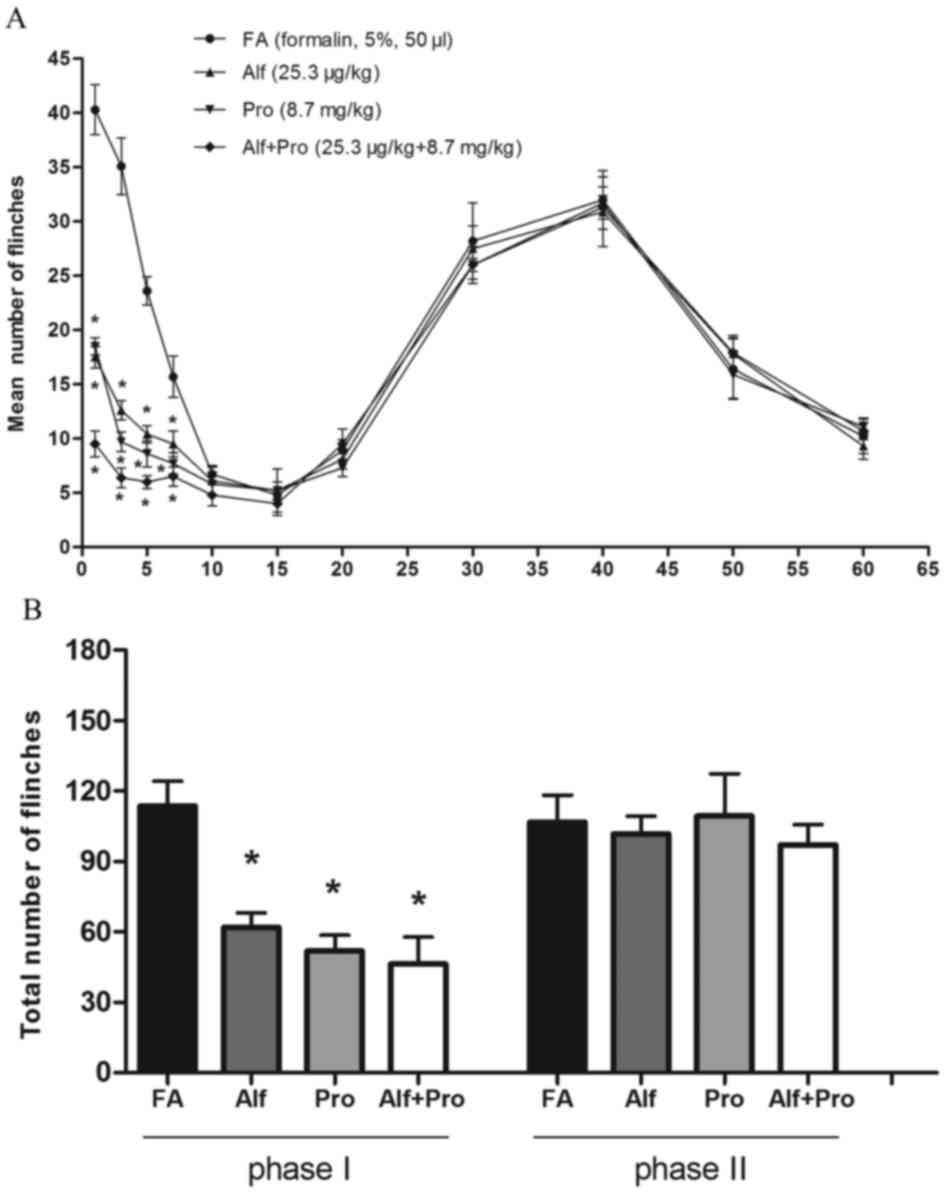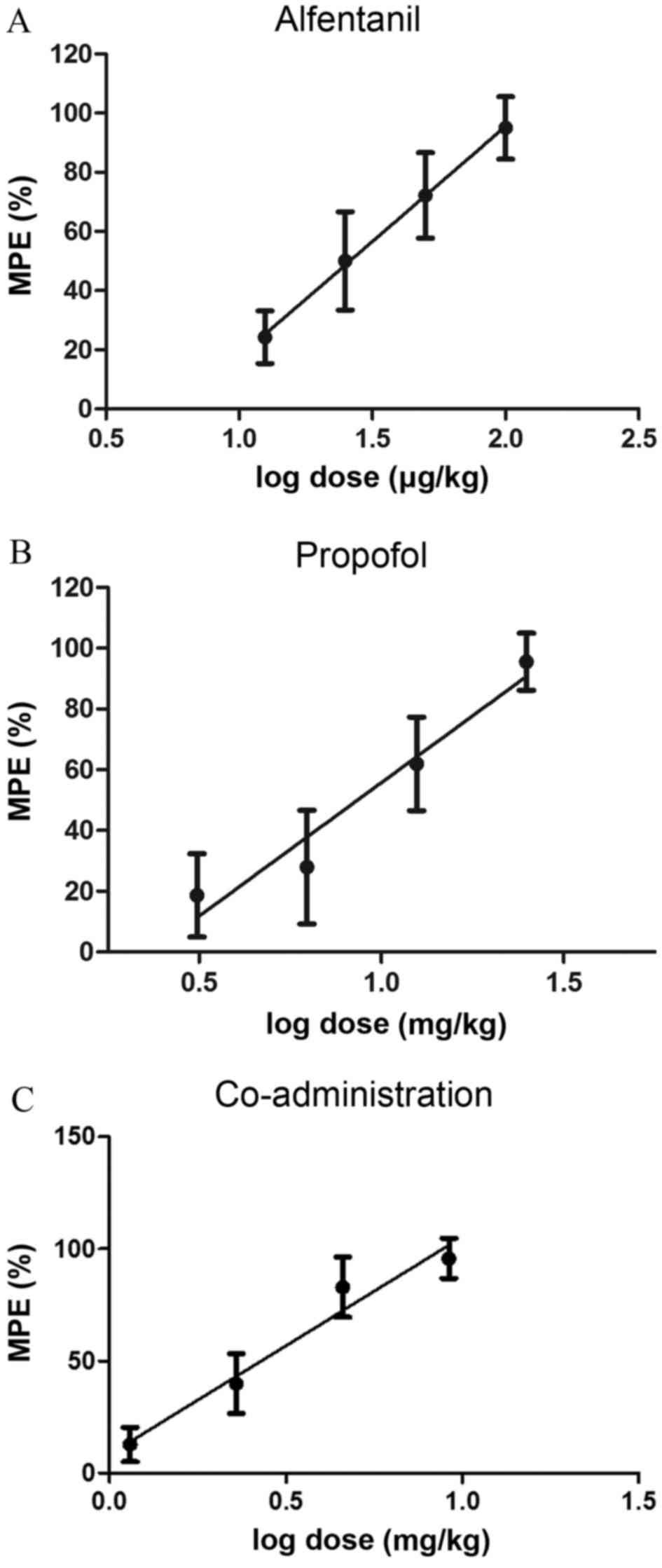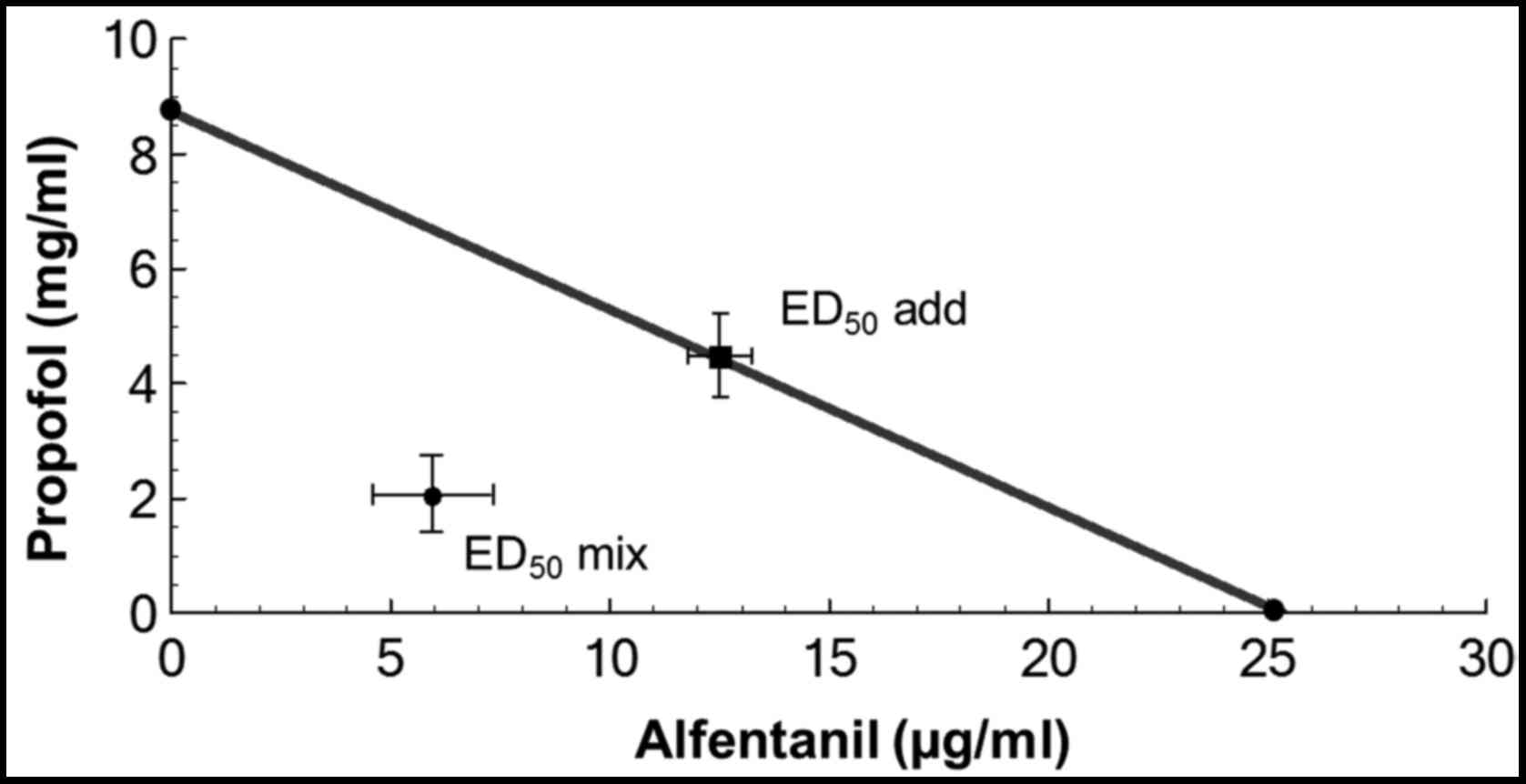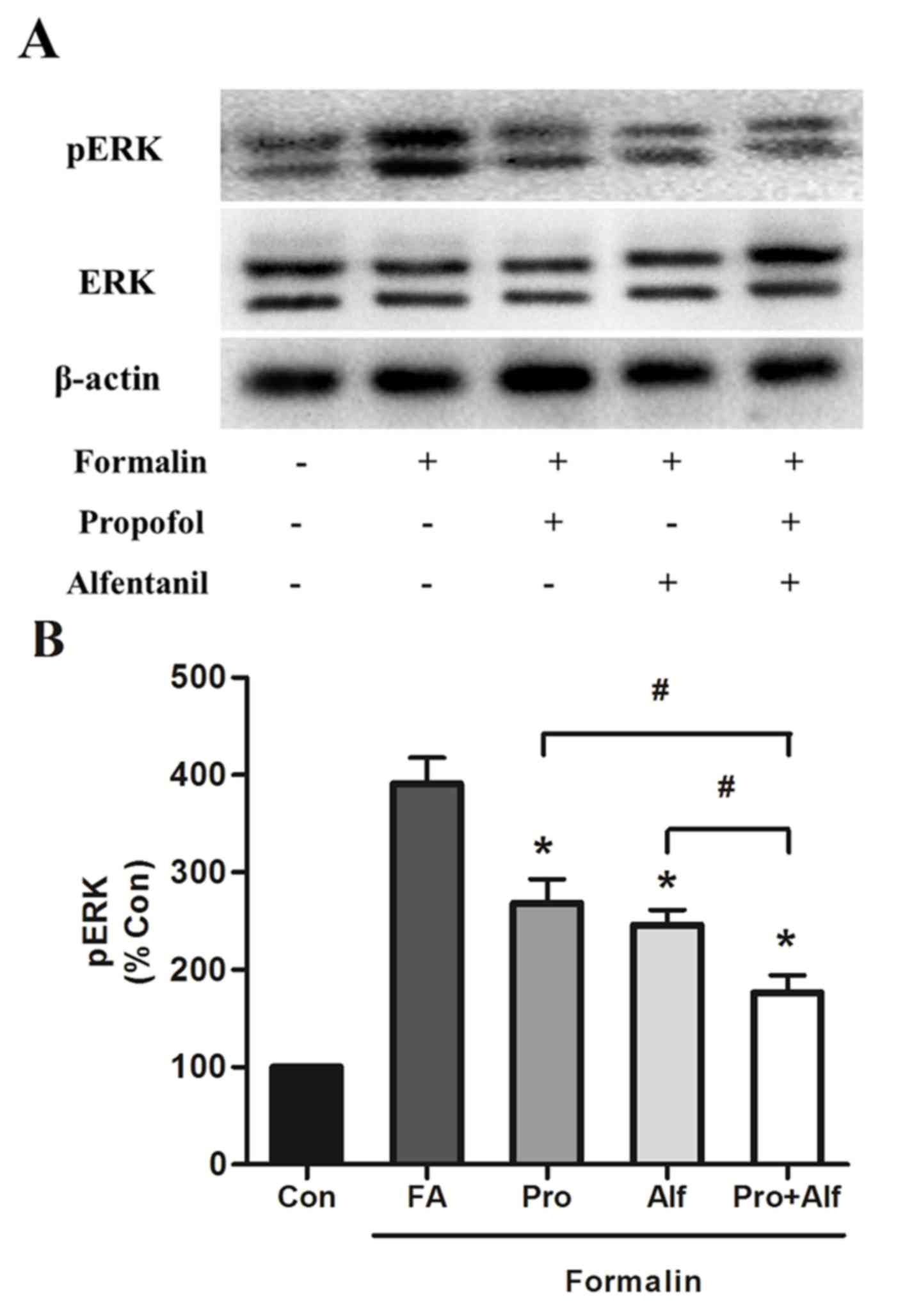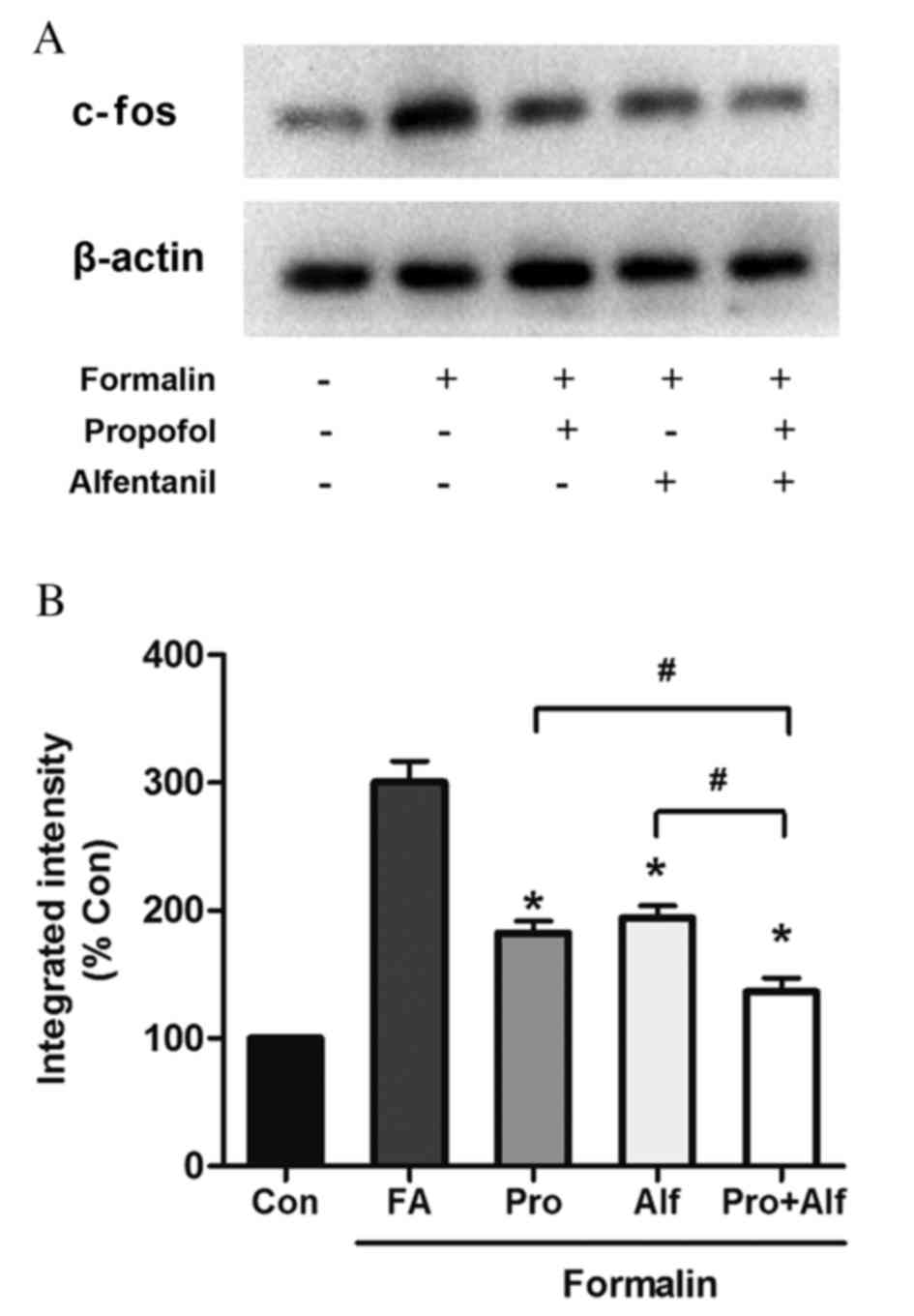|
1
|
Hendrickx JF, EI II Eger, Sonner JM and
Shafer SL: Is synergy the rule? A review of anesthetic interactions
producing hypnosis and immobility. Anesth Analg. 107:494–506. 2008.
View Article : Google Scholar : PubMed/NCBI
|
|
2
|
Kieffer BL and Evans CJ: Opioid receptors:
From binding sites to visible molecules in vivo. Neuropharmacology.
56 Suppl 1:S205–S212. 2009. View Article : Google Scholar
|
|
3
|
Hug CC, Chaffman M, Camu F and Spierdijk
J: Alfentanil: Pharmacology and uses in anaesthesia. Adis.
1984.
|
|
4
|
Taylor BK, Peterson MA, Roderick RE, Tate
J, Green PG, Levine JO and Basbaum AI: Opioid inhibition of
formalin-induced changes in plasma extravasation and local blood
flow in rats. Pain. 84:263–270. 2000. View Article : Google Scholar : PubMed/NCBI
|
|
5
|
Smith I, White PF, Nathanson M and
Gouldson R: Propofol. An update on its clinical use.
Anesthesiology. 81:1005–1043. 1994. View Article : Google Scholar : PubMed/NCBI
|
|
6
|
Gilron I, Quirion R and Coderre TJ: Pre-
versus postinjury effects of intravenous GABAergic anesthetics on
formalin-induced Fos immunoreactivity in the rat spinal cord.
Anesth Analg. 88:414–420. 1999. View Article : Google Scholar : PubMed/NCBI
|
|
7
|
Wu Y, Jia N, Zhao C, Li Y, Shi XP, Li YW,
Wang C, Li RL, Wang JW and Wen AD: Synergistic antinociception of
propofol-alfentanil combination in mice. Pharmacol Biochem Behav.
116:25–29. 2014. View Article : Google Scholar : PubMed/NCBI
|
|
8
|
Sun YY, Li KC and Chen J: Evidence for
peripherally antinociceptive action of propofol in rats: Behavioral
and spinal neuronal responses to subcutaneous bee venom. Brain Res.
1043:231–235. 2005. View Article : Google Scholar : PubMed/NCBI
|
|
9
|
Ji RR, Befort K, Brenner GJ and Woolf CJ:
ERK MAP kinase activation in superficial spinal cord neurons
induces prodynorphin and NK-1 upregulation and contributes to
persistent inflammatory pain hypersensitivity. J Neurosci.
22:478–485. 2002.PubMed/NCBI
|
|
10
|
Hunt SP, Pini A and Evan G: Induction of
c-fos-like protein in spinal cord neurons following sensory
stimulation. Nature. 328:632–634. 1987. View Article : Google Scholar : PubMed/NCBI
|
|
11
|
Morgan JI and Curran T:
Stimulus-transcription coupling in neurons: Role of cellular
immediate-early genes. Trends Neurosci. 12:459–462. 1989.
View Article : Google Scholar : PubMed/NCBI
|
|
12
|
Vuyk J, Engbers FH, Burm AG, Vletter AA,
Griever GE, Olofsen E and Bovill JG: Pharmacodynamic interaction
between propofol and alfentanil when given for induction of
anesthesia. Anesthesiology. 84:288–299. 1996. View Article : Google Scholar : PubMed/NCBI
|
|
13
|
Vogel HG, et al: Guidelines for the care
and use of laboratory animalsDrug Discovery and Evaluation.
Springer; Berlin Heidelberg: pp. 2023–2037. 2007, View Article : Google Scholar
|
|
14
|
Wood MM and Cousins MJ: Iatrogenic
neurotoxicity in cancer patients. Pain. 39:1–3. 1989. View Article : Google Scholar : PubMed/NCBI
|
|
15
|
Cho IH, Chung YM, Park CK, Park SH, Lee H,
Kim D, Piao ZG, Choi SY, Lee SJ, Park K, et al: Systemic
administration of minocycline inhibits formalin-induced
inflammatory pain in rat. Brain Res. 1072:208–214. 2006. View Article : Google Scholar : PubMed/NCBI
|
|
16
|
Tjølsen A, Berge OG, Hunskaar S, Rosland
JH and Hole K: The formalin test: An evaluation of the method.
Pain. 51:5–17. 1992. View Article : Google Scholar : PubMed/NCBI
|
|
17
|
Guindon J, LoVerme J, Piomelli D and
Beaulieu P: The antinociceptive effects of local injections of
propofol in rats are mediated in part by cannabinoid CB1 and CB2
receptors. Anesth Analg. 104:1563–1569. 2007. View Article : Google Scholar : PubMed/NCBI
|
|
18
|
Jia N, Zhao C, Wang L, Li Y, Cui J, Cao S,
Li R, Wang C, Wu Y and Wen A: The effects of a propofol/alfentanil
admixture on total intravenous anaesthesia in dogs undergoing
splenectomy. Veterinární Medicína. 60:194–201. 2015. View Article : Google Scholar
|
|
19
|
Tallarida RJ, Stone DJ Jr and Raffa RB:
Efficient designs for studying synergistic drug combinations. Life
Sci. 61:PL417–PL425. 1997. View Article : Google Scholar
|
|
20
|
Tomić MA, Vucković SM, Stepanović-Petrović
RM, Ugresić ND, Prostran MS and Bosković B: Synergistic
interactions between paracetamol and oxcarbazepine in somatic and
visceral pain models in rodents. Anesth Analg. 110:1198–1205.
2010.PubMed/NCBI
|
|
21
|
Tallarida RJ: Drug synergism: Its
detection and applications. J Pharmacol Exp Ther. 298:865–872.
2001.PubMed/NCBI
|
|
22
|
Tallarida RJ: The interaction index: A
measure of drug synergism. Pain. 98:163–168. 2002. View Article : Google Scholar : PubMed/NCBI
|
|
23
|
Fürst S: Transmitters involved in
antinociception in the spinal cord. Brain Res Bull. 48:129–141.
1999. View Article : Google Scholar : PubMed/NCBI
|
|
24
|
Anker-Møller E, Spangsberg N,
Arendt-Nielsen L, Schultz P, Kristensen MS and Bjerring P:
Subhypnotic doses of thiopentone and propofol cause analgesia to
experimentally induced acute pain. Br J Anaesth. 66:185–188. 1991.
View Article : Google Scholar : PubMed/NCBI
|
|
25
|
Zacny JP, Coalson DW, Young CJ, Klafta JM,
Lichtor JL, Rupani G, Thapar P and Apfelbaum JL: Propofol at
conscious sedation doses produces mild analgesia to cold
pressor-induced pain in healthy volunteers. J Clin Anesth.
8:469–474. 1996. View Article : Google Scholar : PubMed/NCBI
|
|
26
|
Briggs LP, Dundee JW, Bahar M and Clarke
RS: Comparison of the effect of diisopropyl phenol (ICI 35, 868)
and thiopentone on response to somatic pain. Br J Anaesth.
54:307–311. 1982. View Article : Google Scholar : PubMed/NCBI
|
|
27
|
Wilder-Smith OH, Kolletzki M and
Wilder-Smith CH: Sedation with intravenous infusions of propofol or
thiopentone Effects on pain perception. Anaesthesia. 50:218–222.
1995. View Article : Google Scholar : PubMed/NCBI
|
|
28
|
Goto T, Marota JJ and Crosby G:
Pentobarbitone, but not propofol, produces pre-emptive analgesia in
the rat formalin model. Br J Anaesth. 72:662–667. 1994. View Article : Google Scholar : PubMed/NCBI
|
|
29
|
Nadeson R and Goodchild CS:
Antinociceptive properties of propofol: Involvement of spinal cord
gamma-aminobutyric acid(A) receptors. J Pharmacol Exp Ther.
282:1181–1186. 1997.PubMed/NCBI
|
|
30
|
Merrill AW, Barter LS, Rudolph U, EI II
Eger, Antognini JF, Carstens MI and Carstens E: Propofol's effects
on nociceptive behavior and spinal C-Fos expression after
intraplantar formalin injection in mice with a mutation in the
gamma-aminobutyric acid-type(A) receptor beta3 subunit. Anesth
Analg. 103:478–483. 2006. View Article : Google Scholar : PubMed/NCBI
|



